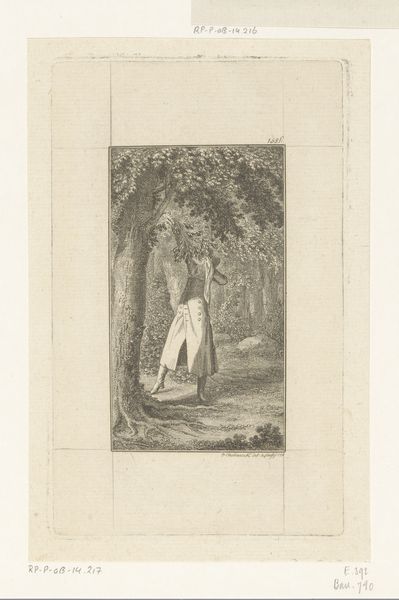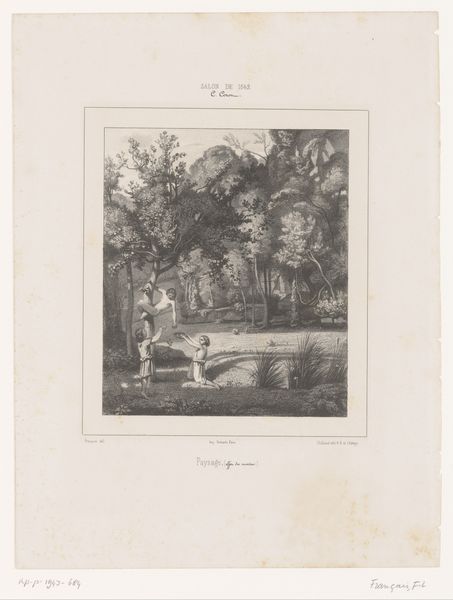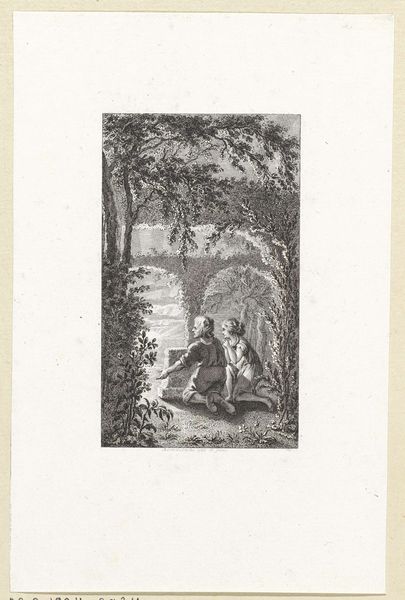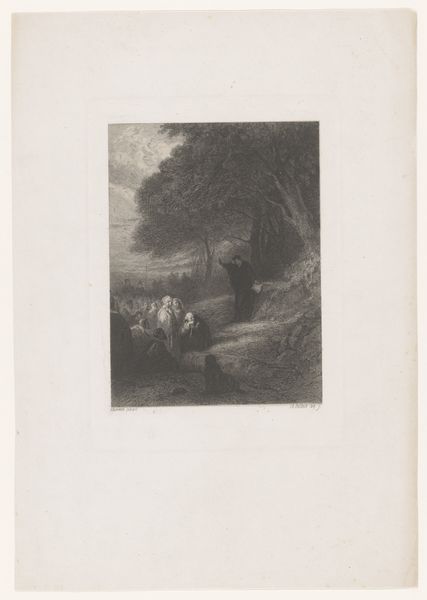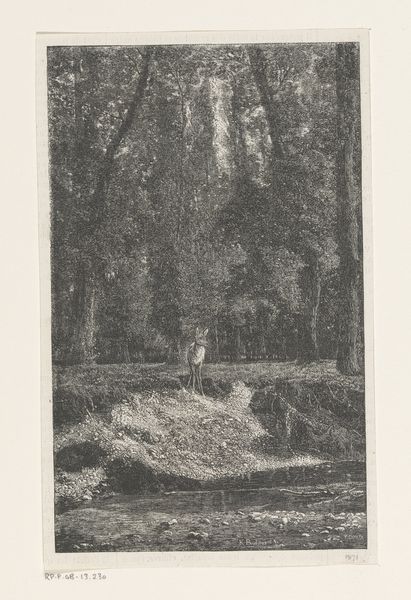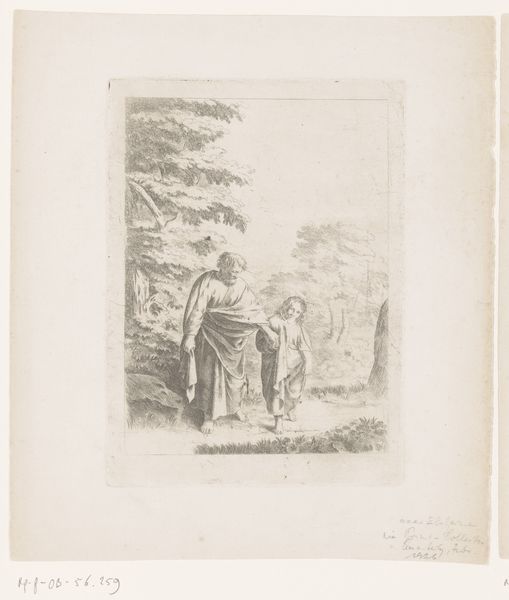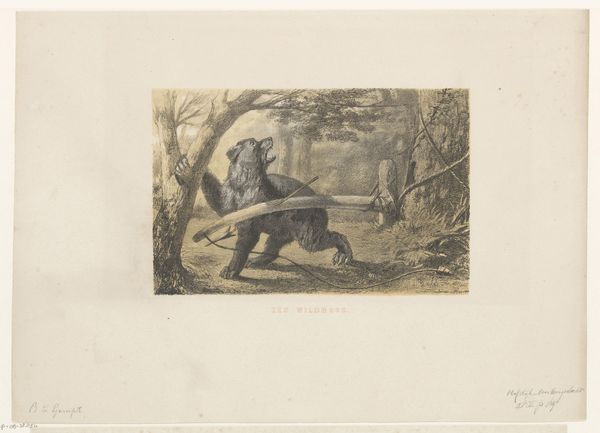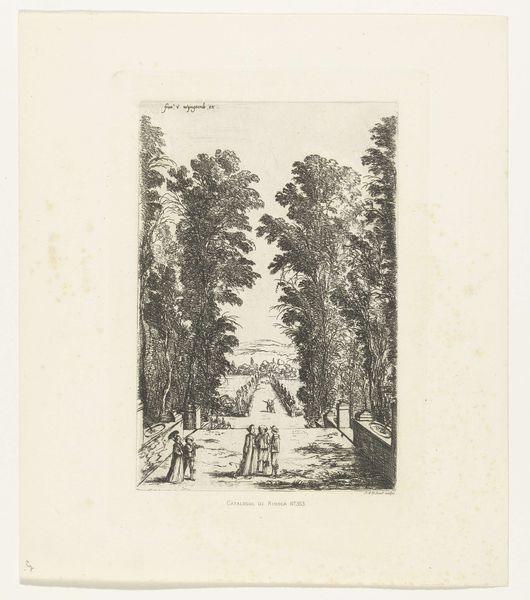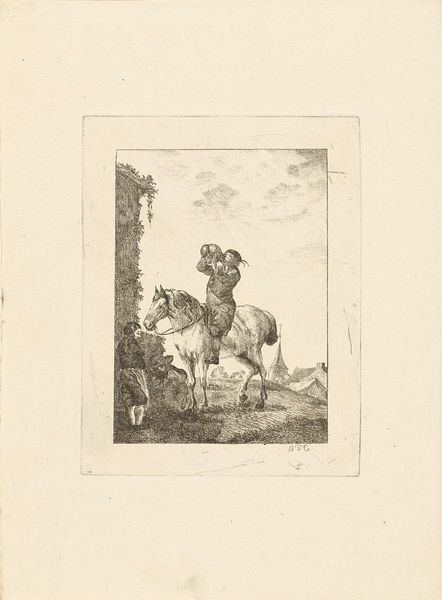
Dimensions: height 173 mm, width 110 mm
Copyright: Rijks Museum: Open Domain
Curator: This print, titled "Will naast het graf," created by Daniel Nikolaus Chodowiecki in 1786, captures a scene of solemn reflection. Editor: My immediate response is somber, melancholic. The muted tones and the solitary figure contribute to a feeling of deep introspection and quiet grief. Curator: Let's unpack that a bit. This work speaks to late 18th-century attitudes towards death and mourning. Chodowiecki, a prominent figure during the Enlightenment, often used his art to explore themes of morality, sentiment, and social reform. Considering the prevailing cultural attitudes of the time, one could argue that grief, such as the figure exhibits here, provided a conduit for expressions of authentic identity. Editor: Absolutely, I'm particularly drawn to how the symbolism of the weeping willow tree, a prominent image within this work, is linked to sorrow, loss, and remembrance across numerous cultures. What does the tombstone inscription itself tell us? Curator: That's key. Unfortunately, the inscription is too faint to read clearly. However, even without knowing the specific details, the very presence of a grave transforms this setting into a potent place of social memory, forcing viewers, even centuries later, to consider the fleeting nature of existence. Editor: And look at how the figure is rendered—his face is obscured, head bowed, which amplifies a sense of universality. This isn't just about one person's loss, but about the shared human experience of grieving. The detail in the foliage surrounding the figure also feels intentional. Is there any reading for it? Curator: The natural imagery certainly emphasizes a connection between mortality and the life cycle. Think about the Romantic movement emerging during this period. Editor: Understood! Even though simple in its execution, there’s an inherent drama within it. This unassuming artwork quietly challenges viewers to confront difficult emotions tied to mortality and social roles in times of loss. Curator: Indeed. By contextualizing his personal mourning in the broader social landscape, the print becomes an expression of collective consciousness. Editor: A quiet reflection that speaks volumes, even now.
Comments
No comments
Be the first to comment and join the conversation on the ultimate creative platform.

